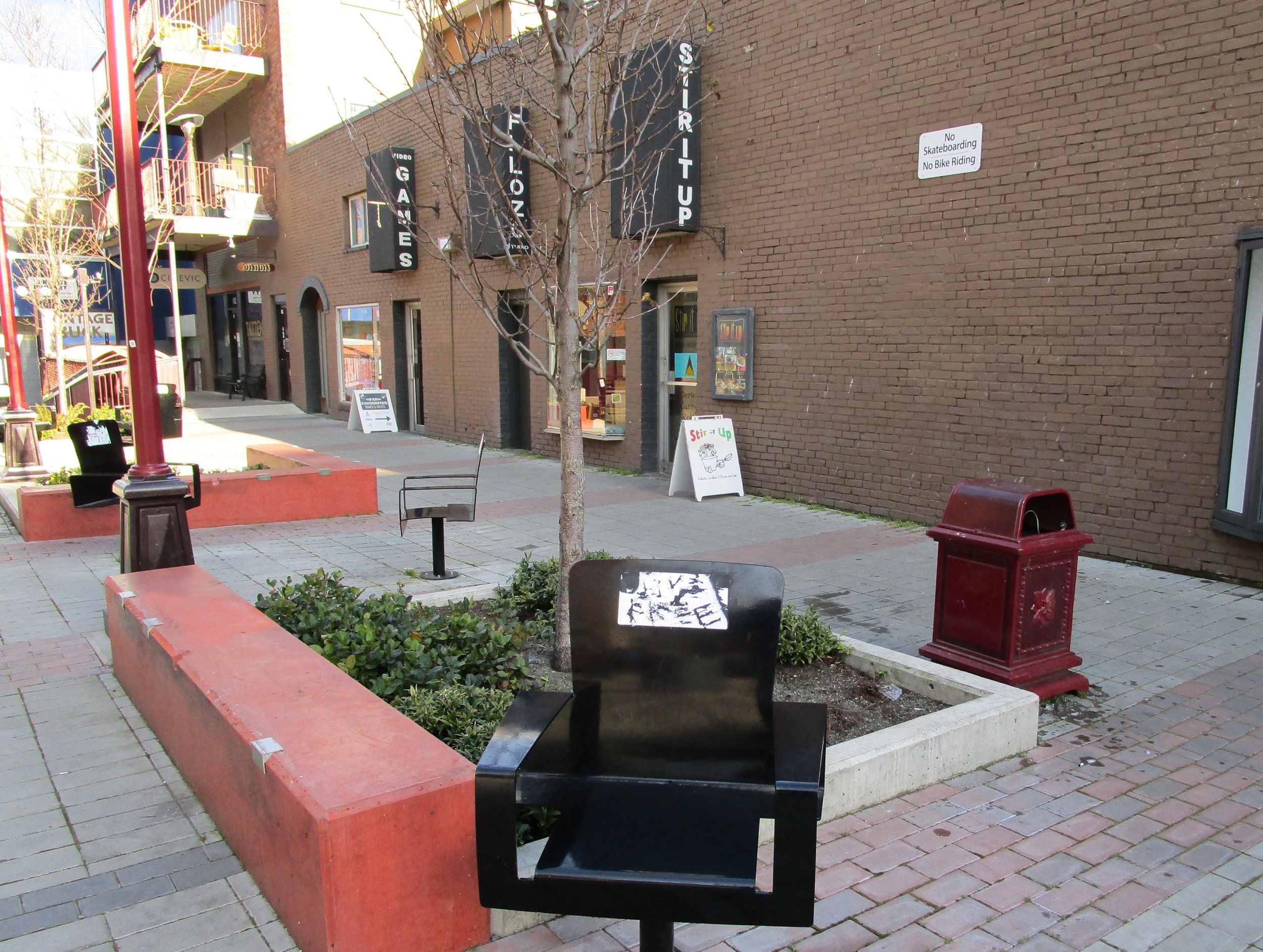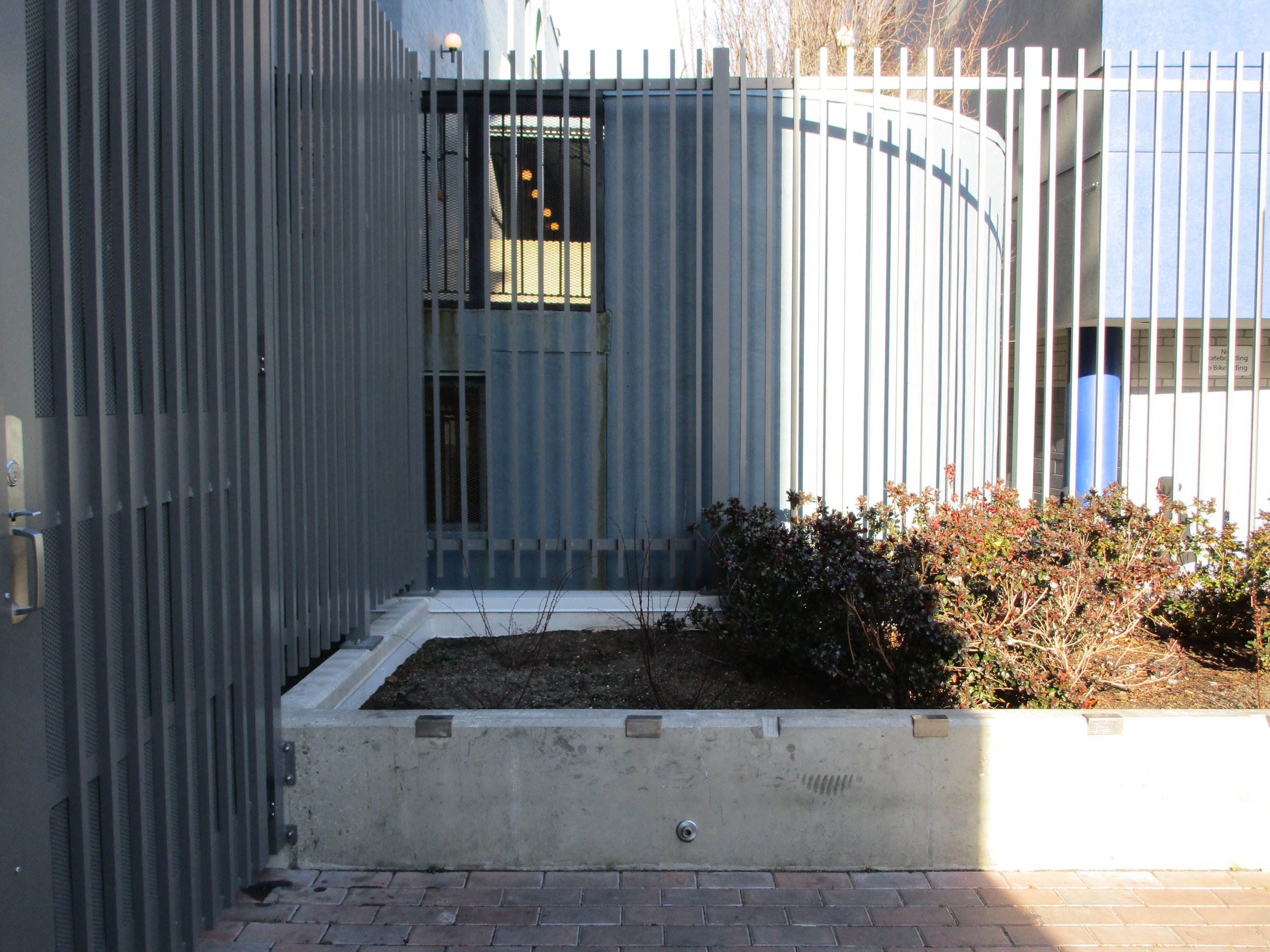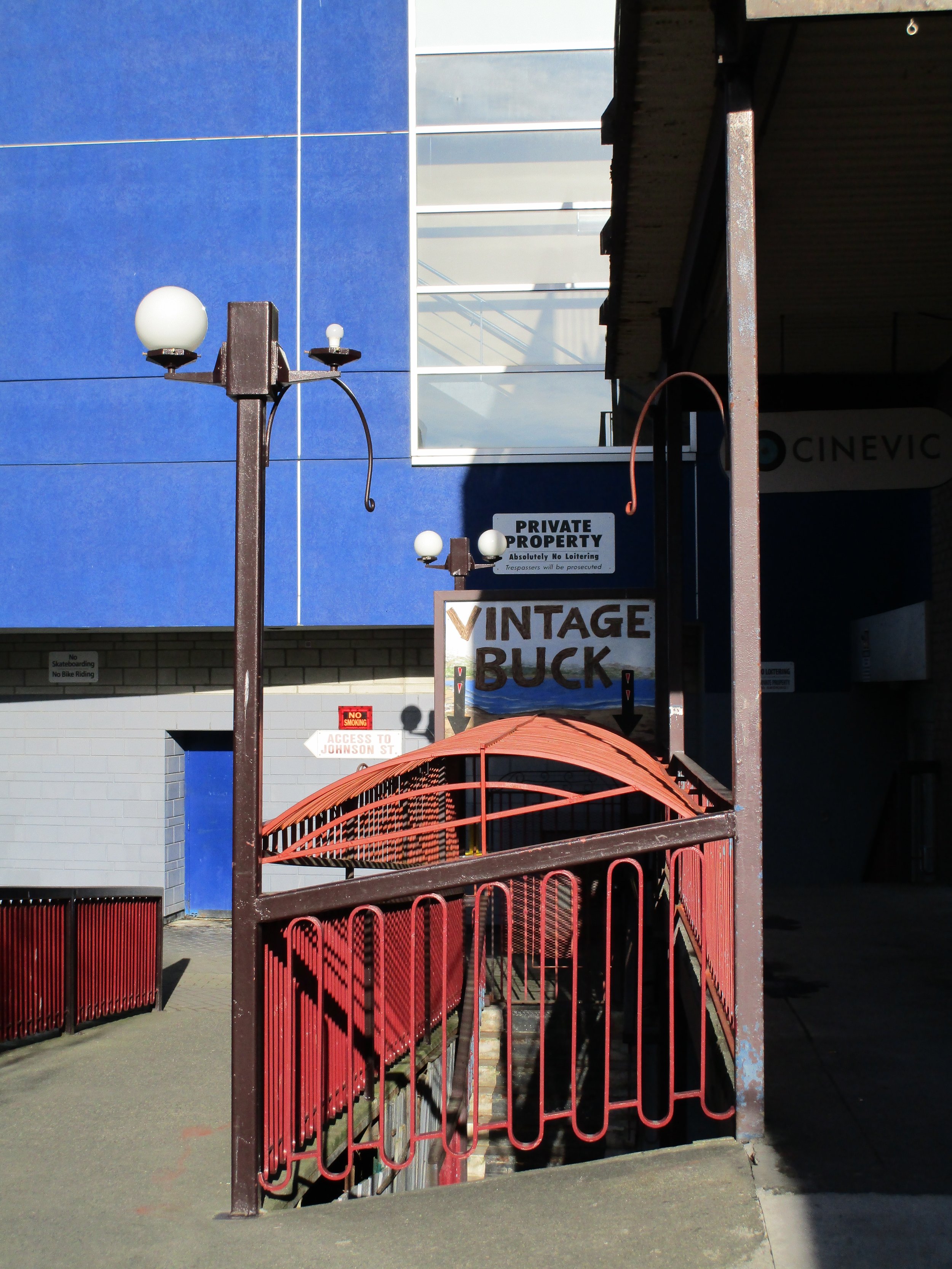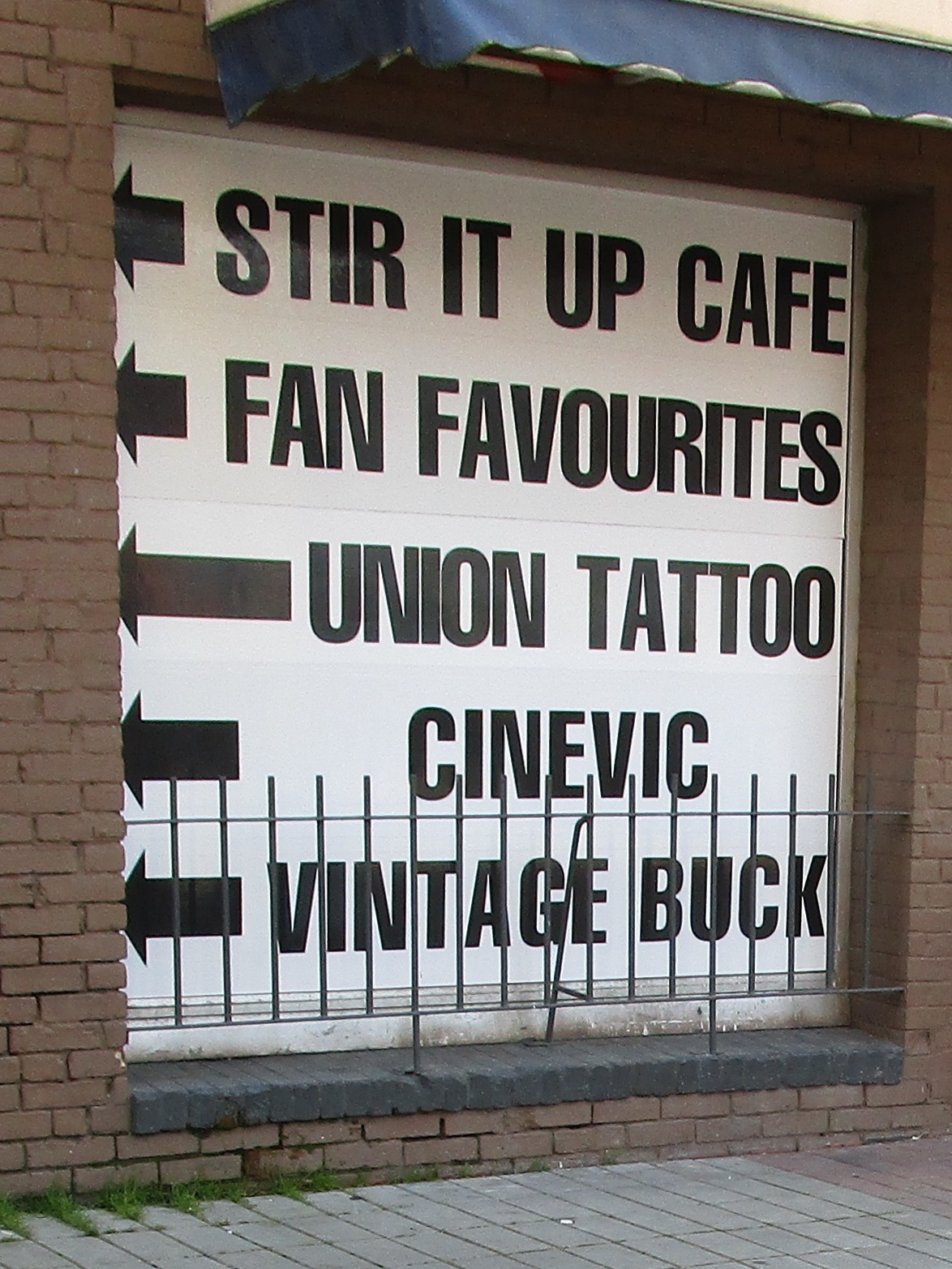Victoria's grumpiest alley
Odeon Alley isn’t just policed by Cineplex on the theatre’s north-side turf. The south side of the alley is both public and private, and defensive architecture runs the entire length. The older portion is owned by the City of Victoria, and Concert Properties owns the newer section. Despite attempts to make the alley a ‘people place,’ the City’s section includes designs to discourage people from sitting down in groups or skateboarding. And Concert Properties is happy to let you know that you can be arrested if you break their "no loitering" rule.
The city was originally the sole owner of the Yates half of the alley, and they’ve posted signs to tell you to get off your skateboards and bikes. In case the warnings aren’t enough, metal clips have been installed on the planters to keep anyone from grinding on a ledge. I can’t spot the anti-skateboarding traps in this April 2015 photo from VictoriaPlacemaking, so they must be relatively new.


The city’s portion of the alley also features the least welcoming chairs in the world. They’re not benches of course (heaven forbid, someone might sleep there), but if they were actually supposed to encourage people to stop and hang out, they might want to try again. A friend pointed out that the chairs have been placed almost as if they were designed to discourage conversation. My pictures can’t do them justice, so check out VictoriaPlacemaking’s photo:
Source: Greater Victoria Placemaking Network April 2015 event poster
“If only these chairs could swivel” is right. But hey, I get it. If you install chairs that people could use to talk to one another, then you’re basically encouraging people to sit down in groups. And if the wrong type of people sit down, then you’ve got a textbook case of loitering on your hands, folks. Best to nip the problem in the bud and have the chairs face off into the distance. Quiet contemplation only, please! Ideally for five minutes or less, and if you light a cigarette, so help me…
While they don’t own any portion of the alley itself, there are two other businesses using highly visible pieces of defensive architecture. A stairwell has been blocked off from every side – left, right, front, back, and top – with elaborate metal barriers. And a business at the southeast corner of the alley has put up a metal fence to block access to a ledge.


When Concert Properties’ “Era” condo building went up at the southwest corner, they set it back a bit from the property line. The result is that the alley, which used to run in a zig-zag, is now a straight shot from Yates to Johnson. VictoriaPlacemaking reports that the decision to expand the alley means that “The public won’t know where the [condo’s] property line runs.”
Not happy with that ambiguity, Concert Properties has put up signs to let everyone know that their portion of the alley is fake public space: if you’re on their side, you’re standing on private property. According to their signage, if you skateboard, trespass, loiter, or solicit, you can be arrested. Because there’s nothing to indicate that part of the Yates half of the alley belongs to a property company, and the rest belongs to the city, people could be forgiven for thinking the whole alley is privately owned. Especially in light of the “private property” signs littered throughout the Johnson half of the alley.
What not to do on Concert Properties’ property
Concert Properties’ sign doesn’t look ambiguous, but loitering laws are often selectively enforced against already marginalized groups. The result is that some people are allowed to loiter, and some aren’t. For example, VictoriaPlacemaking held an event in 2015 where people were encouraged to bring chairs and make use of Odeon Alley. The event had the support of Concert Properties. That’s a far cry from businesses’ history of aggressive responses to lower-income Victorians using the alley.
Two open houses for the Concert Properties building found that “the public … wanted the [alley] to be inviting to larger numbers of people, not just to those who might be looking to pass through or, late [at] night, do a drug deal or throw down a sleeping bag.”
Public space is for everyone, until a more vocal public decides they don’t want certain people using “their” public space.
